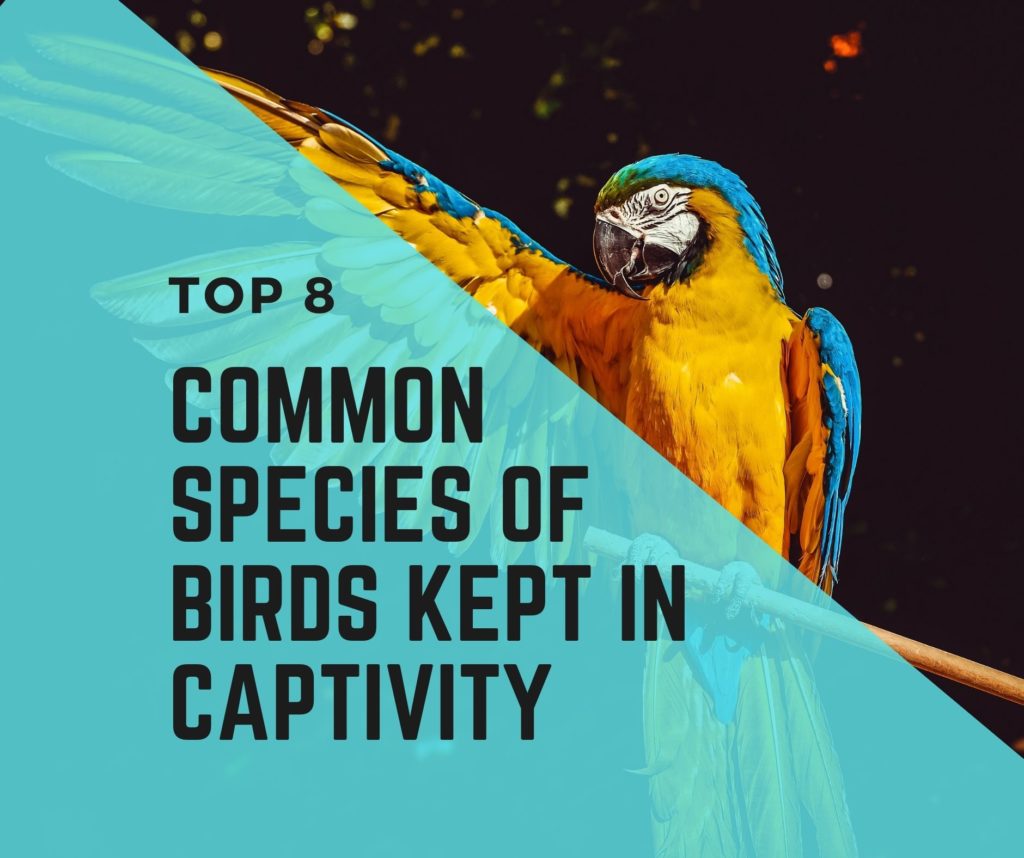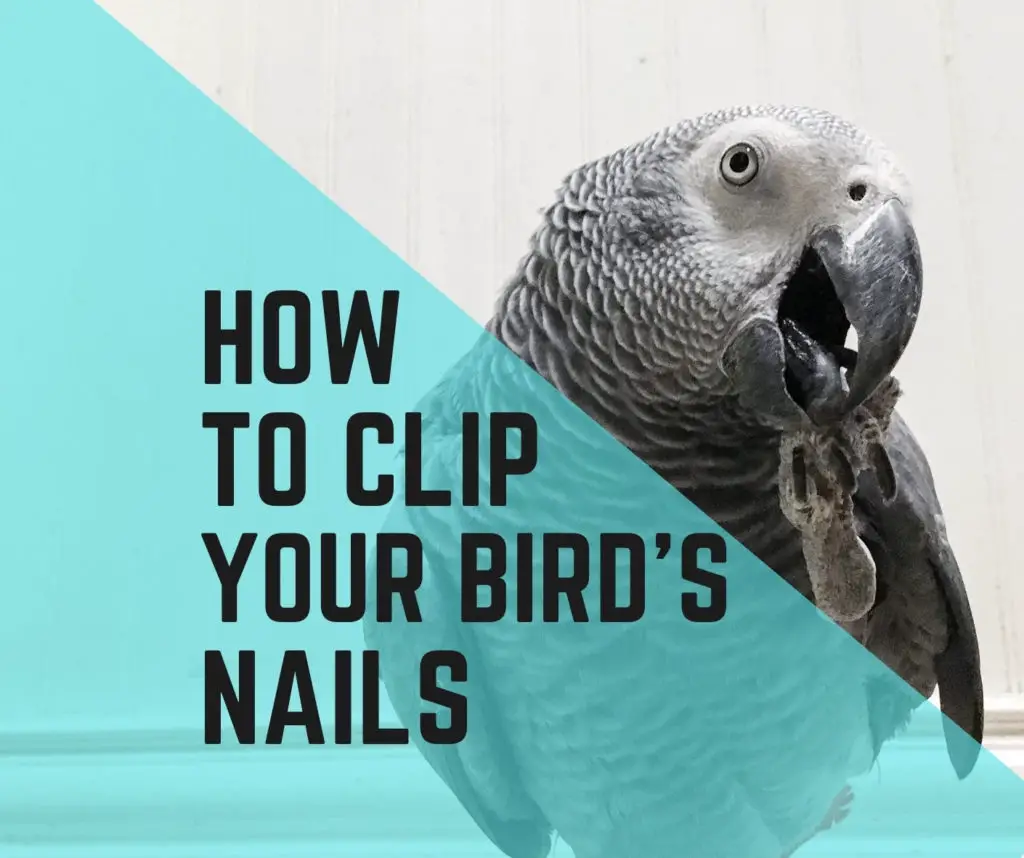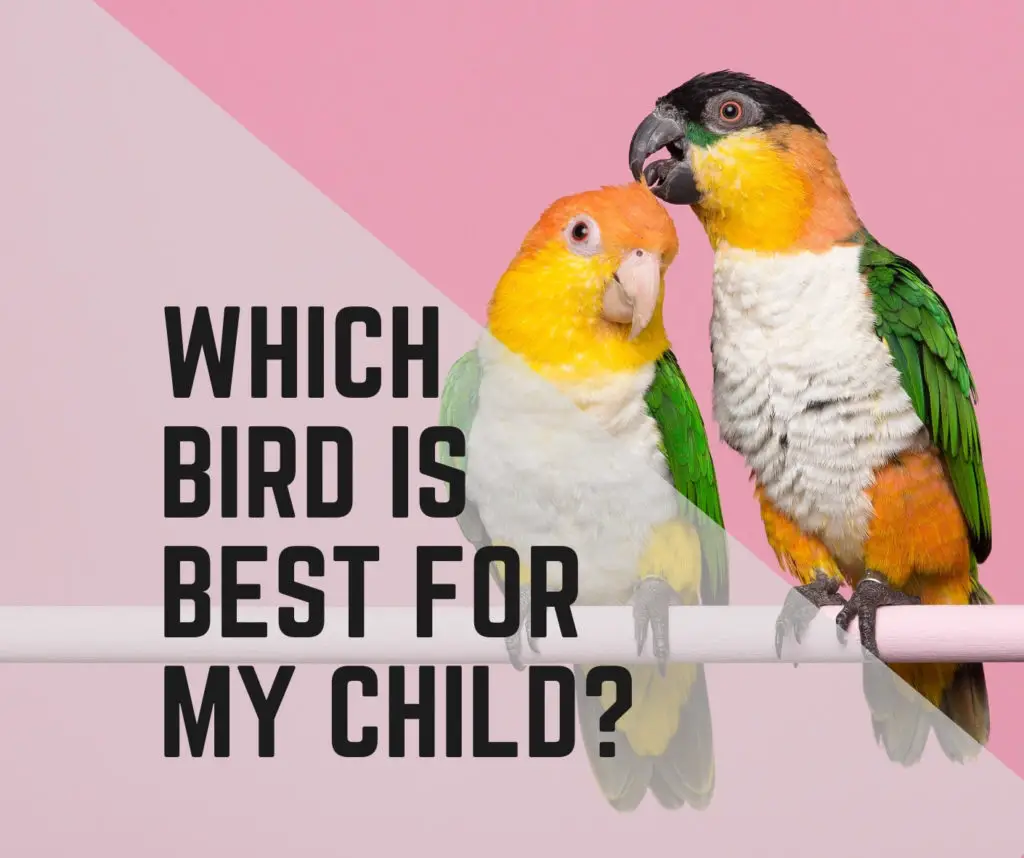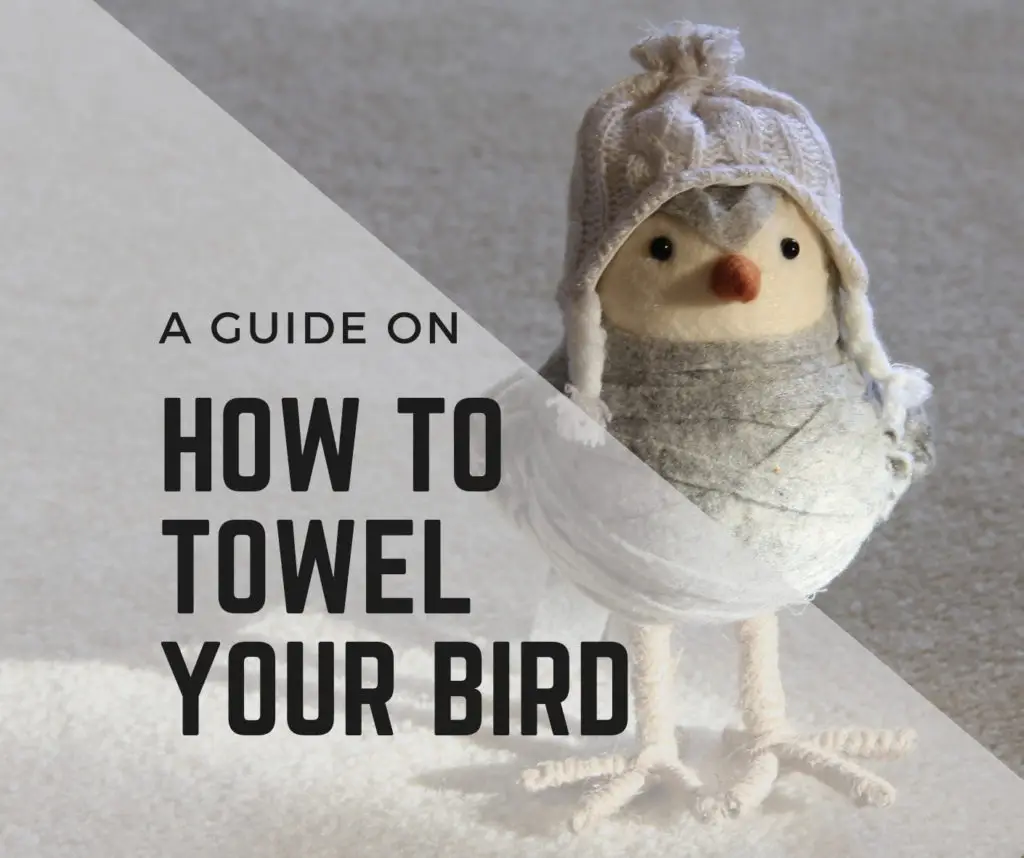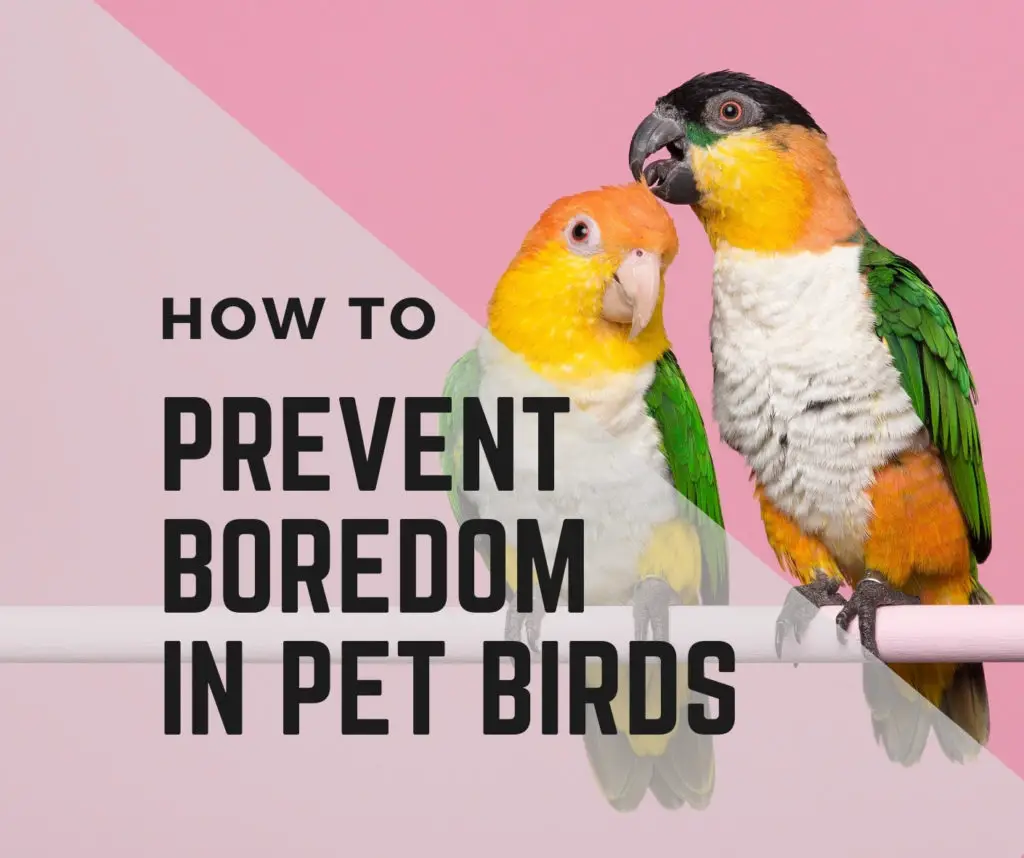Unlike dogs and cats, birds do not have different “breeds”. They are actually all different species. This means that a Scarlet Macaw is a totally different species than a Blue and Gold Macaw.
And within some species (like Cockatiels) you’ll find many different mutations, which are just color differences.
Here’s a list of some of the popular species of birds and some characteristics you should be aware of.
Budgerigars
Otherwise known as Parakeets or Budgies, these little guys are plentiful in pet stores. Of course, I always advocate adoption, and you can find budgies in some shelters and in avian rescue facilities.
Most people pay around $15-20 for a Budgie. They’re small, colorful, and they have very sweet chirps. These birds can be green, blue, white, and other color combinations.
Some interesting facts about Budgies:
• Believe it or not, Budgies are also one of the best talkers of the bird world! Not all Budgies talk, of course, but many can learn.
• The average life span is only about 10 years, but with proper care, nutrition, and veterinary attention, they can live to be 15 or 20 years old.
• They need larger cages than you would think they need. I wouldn’t put a Budgie in a cage smaller than 20″ by 20″ by 60″, especially because most Budgies aren’t taken out of their cages, they need the room to fly. If you house more than one Budgie together, you’ll want a larger cage.
• Most Budgies aren’t cuddly. They might sit patiently on your shoulder for a bit, but they won’t solicit head scratches as a Cockatiel would.
Cockatiels
Hands down, my favorite bird is the Cockatiel. They are generally sweet, friendly, and cuddly, and quite non-demanding compared to larger parrots. Again, these little guys are plentiful in avian rescue facilities and adoption groups.
There are many different color mutations, which range from the normal gray color, to pied, lutino, and white face.
Some facts about Cockatiels:
The average life span for Cockatiels is around 15 years, but they have been known to live 20-25 years with excellent care.
• I would also recommend a cage no smaller than 20″ by 20″ by 60″. Cockatiels and Budgies can usually be housed together, and they also do well with other Cockatiels.
• Most ‘Tiels love to have their necks scratched. Females are a bit more cuddly than males, but I’ve known a few male ‘Tiels who were cuddle bugs.
• Male Cockatiels are generally more vocal than females. Their calls and songs can be quite loud! Don’t let their small size fool you! Male ‘Tiels can also learn to talk and they can learn specific whistles (my male ‘Tiel especially loved the “wolf whistle”).
• ‘Tiels are especially prone to breeding behaviors. To avoid inducing your bird, be sure to limit daylight hours (12 hours of light and 12 of dark are good), avoid letting him hang out in dark spaces like boxes and sleeping huts, and don’t pet him or her anywhere but the head and neck area.
Finches and Canaries
These birds, unlike the other birds discussed in this section, are softbills. These are not cuddly birds.
Most people keep these birds for their colors or their songs. They greatly enjoy the company of other birds.
While the song of the canary is cherished, it is actually a sorrowful song, used to call out for a missing mate.
These birds are plentiful and relatively inexpensive to purchase and care for.
You can find them in shelters and rescue facilities. They do quite well in aviary situations.
Medium-sized Parrots
Birds such as Conures and African grey parrots are also available, but I generally don’t recommend them to people who have never lived with birds before. These birds live a long time and can be more sensitive to environmental constraints.
Some are known for behavioral problems such as feather plucking and screaming. Here are some concerns about medium-sized parrots:
Conures
- Conures are noisy! Very noisy! If you like ear-splitting screams multiple times a day, go get a conure. If you don’t, you’ll probably want to avoid these guys.
- Conures can live 25-35 years in captivity.
- Most Conures are very colorful.
African Greys
African grey parrots are known as being the top talker of the bird world. They are extremely intelligent, but with this intelligence comes a very deep sensitivity. They are complicated animals who need people who can be very accomodating to their needs.
Many greys will not talk -some simply mimic sounds. My grey says only 3 or 4 words but mimics just about every sound she hears (including a fire alarm!).
• Grey parrots have gray bodies and bright red tails.
• Grey parrots can live 50-60 years in captivity.
• Grey parrots are known to be prone to feather-picking behaviors due to their emotional sensitivity.
• Grey parrots are also prone to calcium deficiencies. Their bodies don’t metabolize calcium as well as other birds do. They need extra care taken with their diet to ensure proper calcium absorption.
Larger Parrots
I do not recommend larger parrots for just about anyone.
These would include Amazon parrots, Cockatoos, and Macaws. They all provide very unique and complicated challenges.
These birds require a large amount of space, not just for their cages, but for their play stands, toys, and other accessories.
Due to their potential for inflicting serious injury, they should never be handled by children or guests unfamiliar with them.
Their body language can be difficult to read for those unfamiliar with their species. Here are some facts about the larger parrots:
Amazons
• Amazon parrots can be very loud.
• The average life span of an Amazon is around 50-60 years in captivity.
• Amazon parrots are very susceptible to hormonal challenges.
During the breeding season, some Amazon parrots can become extremely aggressive to the point of being dangerous to their human family.
Cockatoos
• Cockatoos can live to be up to 80 years old in captivity.
• Some species of Cockatoo (Moluccan especially) are known to be very sensitive and needy of their caretakers. They are cuddly as chicks, but as they grow older they become dependent on their human caretaker for their social needs. This often results in birds who scream constantly!
• Some Cockatoos can become unpredictable, biting and attacking long-time caretakers, inflicting very serious wounds. I’ve seen Cockatoo bites that have required reconstructive surgery!
Macaws
• Macaws can live 70 years in captivity.
• Macaws have one of the loudest calls in the bird world.
• Macaws are the largest parrot species on earth. They require a very large amount of space, which most people are not capable of providing.
• Because their body language can be so difficult to read, and because their beaks are capable of inflicting very damaging wounds, children and guests should not be allowed to handle them.
In Summary
So, while there are many species of birds available for adoption, there are only a few that I would recommend for most beginners to the bird world.
Don’t get yourself into a situation that will become too difficult and expensive for you to handle.
Birds live a long time, and they are expensive to care for. Do your research and then take responsibility for the bird you do choose.

Hi, There and Welcome to BirdsNews.com, is here to help you learn and care about pet birds. and this blog is a journal of everything I’ve learned.

